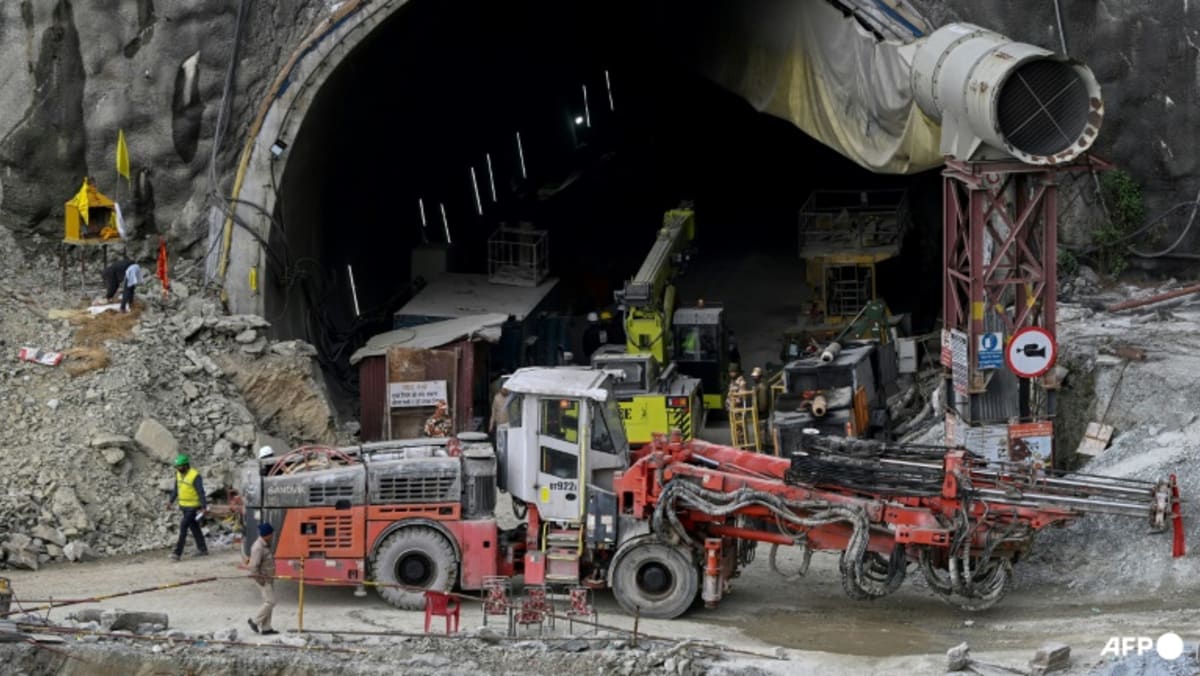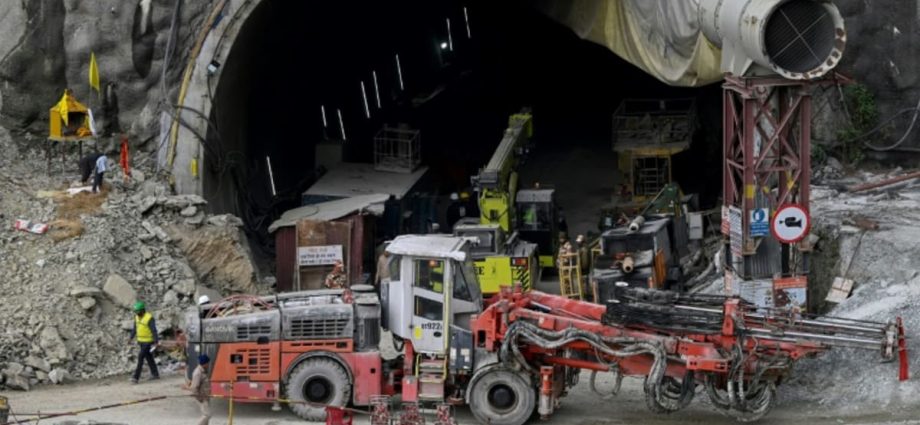
“LAST HOPE”
Rajput Rai, a drilling expert, told the Press Trust of India that three-person teams were taking turns working at the rock face inside a metal pipe, just wide enough for someone to squeeze through.
While one worker drills, a second scoops up the rubble by hand, and the third places it on a wheeled trolley to be pulled out, Rai said, according to PTI’s Tuesday report.
Rescuers have brought in a superheated plasma cutter to slice through metal rods that have repeatedly impeded progress.
Tunnel expert Chris Cooper, who is advising the rescue teams said Monday that progress depended on “how the ground behaves”, warning they may yet have to cut through heavy-duty girders that had been meant to hold the collapsed roof up.
Last week, engineers working to drive a metal pipe horizontally through the 57m of rock and concrete ran into metal girders and construction vehicles buried in the rubble, snapping a giant earth-boring machine.
In a separate effort, a drilling machine was brought up to a forested hill above the tunnel on a specially constructed track.
Vertical drilling from that location is now nearly halfway through the 89m needed to reach the stranded men, a risky route in an area that has already suffered a collapse.
Digging, blasting and drilling have also begun from the far side of the road tunnel, a much longer third route estimated to be around 480m.
The workers were seen alive for the first time on Tuesday, peering into the lens of an endoscopic camera sent by rescuers down a thin pipe through which air, food, water and electricity are being delivered.
“Our only source of strength is God, as it is the last hope for us,” said mother-of-three Musarrat Jahan, whose husband Mohd Sabah Ahmad is a migrant worker trapped inside.
“We have more faith in God than anything”, she told AFP by phone from her home in the eastern state of Bihar, one of India’s poorest.
Though trapped, the workers have plenty of space in the tunnel, with the area inside 8.5m high and stretching about 2km in length.

